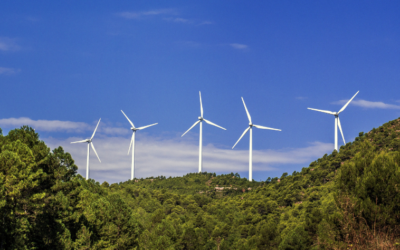Renewable energy in the future is predicted that by 2024, solar capacity in the world will grow by 600 gigawatts (GW), almost double the installed total electricity capacity of Japan. Overall, renewable electricity is predicted to grow by 1 200 GW by 2024, the equivalent of the total electricity capacity of the US.
1. Solar Will Become 35% Cheaper By 2024
When the sun shines onto a solar panel, energy from the sunlight is absorbed by the PV cells in the panel. This energy creates electrical charges that move in response to an internal electrical field in the cell, causing electricity to flow.
Industry experts predict that the US will double its solar installations to four million by 2023. In 2018, the UK had over one million solar panel installations, up by 2% from the previous year and Australia reached two million solar installations in the same year. A big reason for this increased uptake is the fall in prices to install the panels.
The cost of solar PV-based power declined by 13% in 2018, while Carbon Tracker predicts that 72% of coal-based power will become globally unprofitable by 2040. The IEA report found that solar energy will account for 60% of the predicted renewable growth, primarily due to its accessibility. Compared with the previous six-year period, expansion of solar energy has more than doubled. The cost of solar power is expected to decline by 15% to 35% by 2024, spurring further growth over the second half of the decade.
Future Capacity of Solar Energy
Wind and hydropower often require users to live in specific locations, but solar offers more freedom; the sun rises and sets on a predictable schedule, and it’s not as variable as running water or wind. Residential solar power is expected to expand from 58 GW in 2018 to 142 GW by 2024, and annual capacity additions are expected to more than triple to over 20 GW by 2024. China is expected to register the largest installed residential solar capacity in the world by 2024, with the strongest per capita growth in Australia, Belgium, the Netherlands and Austria.
Solar facilities will continue reducing their variability rates by storing electricity during the day and running at night. However, advanced solar plants will operate on higher DC to AC ratios, meaning they’ll deliver more consistent service for longer durations.
Commercial and residential buildings will keep running at full capacity even in periods of low sunlight. Closing the gaps between sunlight collection and electricity generation will spur residents and corporations to join the solar movement. Therefore, it’s imperative for governments to implement incentive and remuneration schemes, as well as effective regulation policies. For example, California has mandated that after 2020, solar panels must be installed on new homes and buildings of up to three storeys.
Commercial and industrial solar energy capacity is forecast to constitute 377 GW in 2024, up from 150 GW in 2018, with China predicted to be the largest growth market. This market remains the largest growth segment because solar power is usually more inexpensive and has a relatively stable load profile during the day, which generally enables larger savings on electricity bills.




